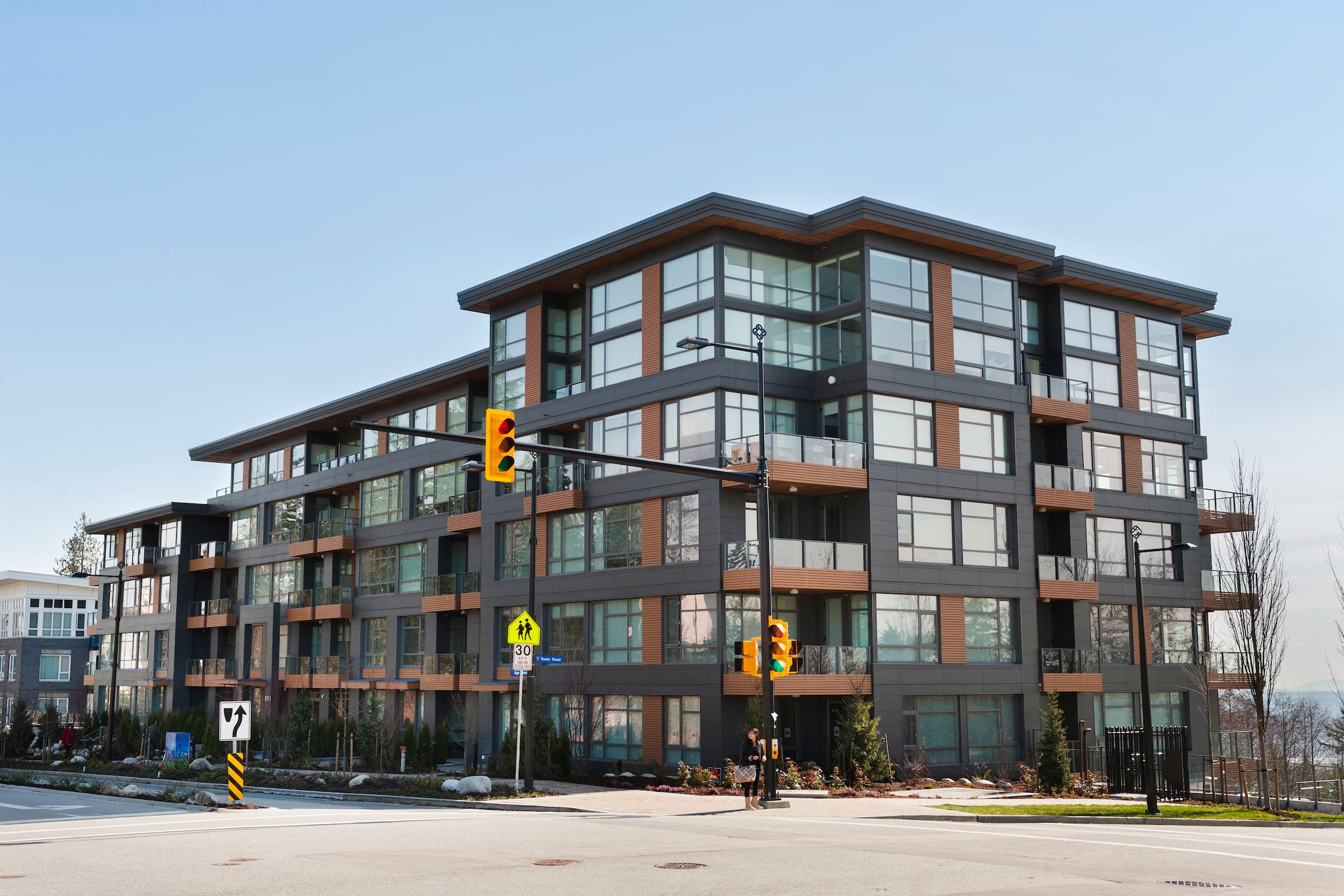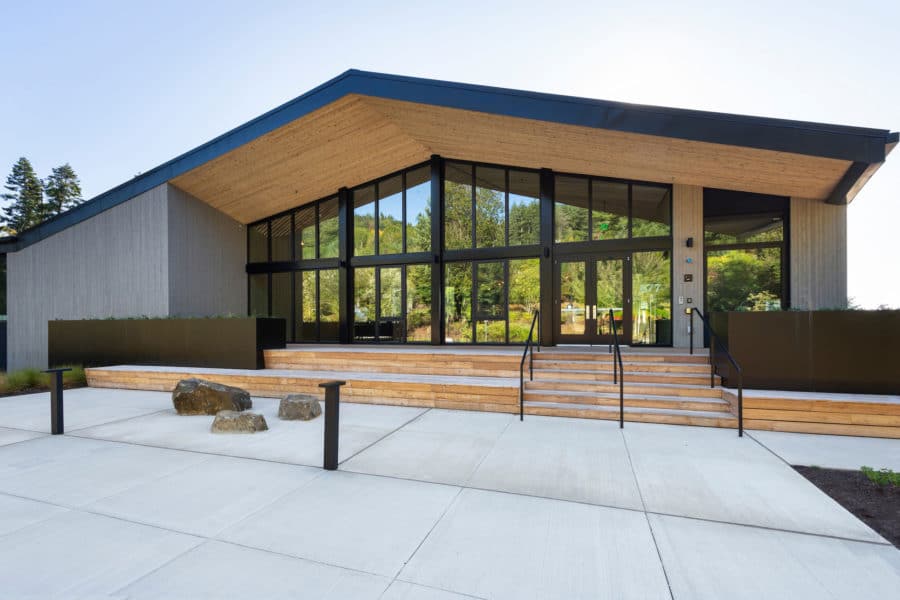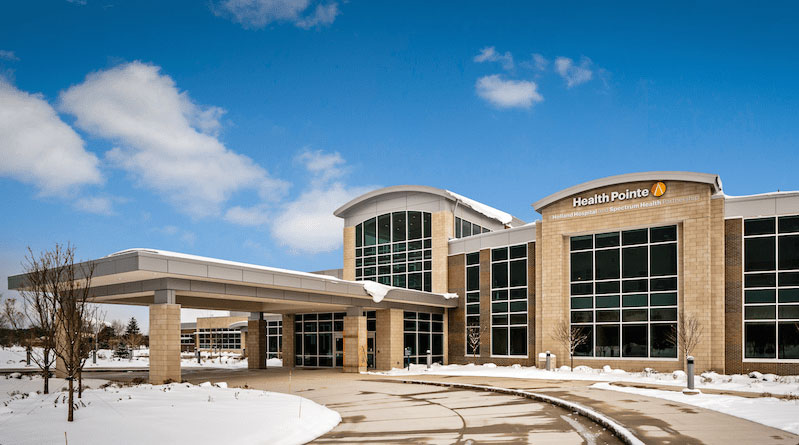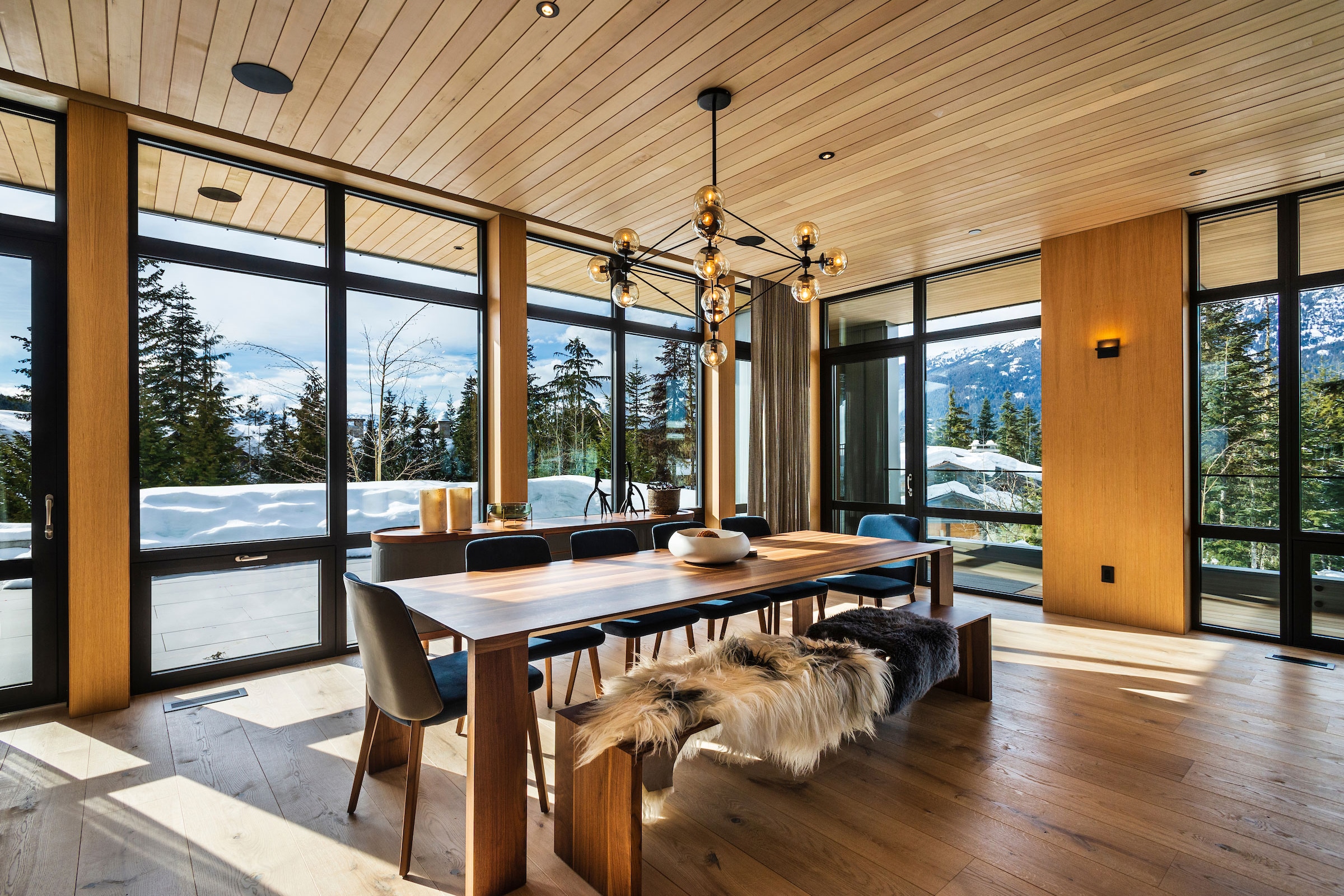Story at a glance:
- Windows can account for up to 50% of the heating and cooling energy loss in a building.
- Fiberglass windows can stand up to extreme temperatures and last more than 50 years.
- Aluminum frame systems can help projects achieve LEED Gold or Platinum certifications.
Plentiful daylighting, thermal comfort, and views of nature—windows provide all of this and more. These benefits are just part of why windows are often at the top of the list of decisions architects and designers need to make. But how do you choose the best windows? And what are the biggest differences between aluminum vs. fiberglass windows?
The USGBC says it has become very important for architects to understand how to choose a sustainable window and window frame system that will promote comfort, energy efficiency, durability, and longevity through quality construction. They even offer a course on sustainable windows, exploring how choosing an ENERGY STAR–rated window can contribute toward the LEED for Homes credit.
The right windows not only let natural light in spaces in ways that make them more comfortable, making for healthier offices and more sustainable homes, but they can also improve indoor air quality. The options, though, can be overwhelming. These are the pros and cons of aluminum vs. fiberglass windows.
Fiberglass Windows

The Origin Apartments features high-performance fiberglass windows that helped the building win multiple awards for design and energy efficiency. Photo by Paul Grdina
Windows currently account for anywhere between 30 to 50% of the heating and cooling energy loss in a building, according to Cascadia Windows & Doors Technical Director Michael Bousfield. He previously told gb&d fiberglass windows improve building performance.
Fiberglass windows offer an avenue to deliver highly livable, long-lasting residential and commercial buildings, while improving energy efficiency and sustainability in general. Bousfield has called fiberglass an ideal structural material for window and door frames—specifically fiberglass with a high glass-fiber-to-resin formula.
“Nearly 10 times stronger than traditional vinyl, thermoset fiberglass is dimensionally stable, meaning it won’t creep and deflect over time. This stability and strength allow fiberglass frame windows to withstand higher wind load, resulting in larger possible windows—even on tall buildings with high wind loads,” he wrote for gb&d.
Fiberglass windows are impervious to decay, insect attack, and corrosion. They can also withstand extreme weather, including temperatures of -40°F through 350°F and higher, without becoming brittle or soft. Fiberglass windows can last 50 years or longer, more than twice the average lifespan of aluminum windows.
Bousfield has said that fiberglass also has an inherently low thermal conductivity, meaning that, without any additional thermal breaks or materials, fiberglass is 500 times less conductive than aluminum. That means a large-span double-glazed fiberglass window is more than 100% thermally efficient than a comparable aluminum window.
Pros of Fiberglass

Photo courtesy of Cascadia
Fiberglass windows have many benefits, from standing up to decay and pests to having a long lifetime. Here we explore some of those advantages in greater detail.
Impervious to Decay, Insects, and Corrosion
Fiberglass windows are essentially impenetrable to insects and stand up to decay for a longer time, according to Cascadia Windows & Doors. Plus, fiberglass doesn’t mind water. And because fiberglass isn’t affected by moisture, you don’t have to worry about rot, corrosion, mold, shrinking, and swelling.
Stand Up Extreme Temperatures
Fiberglass windows can also withstand more extreme temperatures than their counterparts—from -40°F all the way up to 350°F or more. Extreme heat nor cold has any impact, according to This Old House. Almost no matter the temp, fiberglass won’t change. This further reduces the risk of leaks.
Energy-Efficient
According to Cascadia Windows, fiberglass has an inherently low thermal conductivity. This means that with no additional thermal breaks or additional materials, fiberglass is 500 times less conductive than aluminum. Therefore, Cascadia says, a large-span double-glazed fiberglass window is more than 100% more thermally efficient than a comparable aluminum window.
Longer Lifespan
Fiberglass windows are estimated to have a lifespan of 50 to 80 years, or more than twice that of aluminum windows, according to Cascadia. That’s also more than four times the expected lifespan of vinyl/PVC windows, they report. They are inherently durable in nature, and fiberglass window frames put less stress on their adjacent glass units, meaning less failed seals and air gaps, too.
Cons of Fiberglass
Fiberglass windows are not without their disadvantages, though. From a sometimes higher cost to condensation, here we explore some of the cons of choosing fiberglass.
Cost
Fiberglass typically costs more than vinyl windows, for starters. Vinyl is appealing to many because of its low cost—often up to 30% less than fiberglass, according to Real Homes. This includes not just purchasing the window, but also the installation costs.
Installation
Experts say vinyl is an easier “do it yourself” option when it comes to installation. Fiberglass may be more cumbersome to install as it’s more rigid. It is recommended to hire a professional to install fiberglass windows.
Availability
Fiberglass windows are increasingly popular, perhaps affecting their availability. You also tend to have fewer design options than, say wood windows. Also worth considering is the fact that some fiberglass windows should not be painted.
Condensation
Although condensation may be worrisome, it’s mostly a cosmetic issue, according to Pella windows. The experts there say moisture on your windows doesn’t necessarily indicate a problem; on the contrary that may indicate that the windows are forming an airtight seal, reducing air leakage and keeping the moisture inside your home.
However, excess amounts of condensation may trickle elsewhere and cause blistering, cracking, or peeling paint, among other issues. In the instance of excess condensation, you should work to identify the root cause.
Aluminum Windows

The AECOM team chose YKK AP products to stand up to the cold. Photo courtesy of YKK AP
The experts at YKK AP have thoughts on the topic, too, saying upgrading a building’s framing system with aluminum frames is a cost-effective option for improving your project’s sustainability or even achieving LEED Gold or Platinum.
YKK AP America’s Steve Schohan previously wrote about the benefits in an article for gb&d, exploring how aluminum building framing systems in particular have evolved.
Aluminum framing systems were known for their high thermal conductivity, or vulnerability to heat gain and loss, but in general Schohan says their thermal performance and resistance to condensation have evolved to become considerable strengths.
He says a framing system’s thermal performance is less effective when the aluminum that sits inside the conditioned space connects with the outside unconditioned material. “In cold climates the aluminum acts like an ice cube in your building, which requires more energy to control interior temperature. This makes the type of framing system, and the performance of that system, critical when considering the energy performance of a building,” he wrote for gb&d.
Schohan says thermal breaks in aluminum framing systems were first introduced to help solve the issue of high thermal conductivity as part of the response to the energy crisis in the 1970s. Today thermal break technology is even more advanced, as the outside of the aluminum frame is thermally isolated from the inside of the aluminum within the glazing system. This process delivers strong energy savings economically.
Schohan says products like YKK AP’s ThermaBond Plus and MegaTherm further save energy and reduce condensation, delivering proven performance over the life of the building.
Thermal enhancement technologies in aluminum framing systems significantly reduce heat loss during cold weather yielding warmer interior surface temperatures on the frames, which helps to mitigate condensation and thereby increasing a building’s thermal performance.
Pros of Aluminum Windows

The Westin Tampa Waterside used NeverFade on both the structure’s masonry and aluminum window frames. Photo courtesy of APV Engineered Coatings
Aluminum windows have many advantages. Perhaps the most popular reasons people turn to aluminum for their windows is their long lifespan and low maintenance. Here are the benefits of choosing aluminum windows.
Low Maintenance
Aluminum windows are fairly low maintenance across their lifespan, though the same could most likely be said about fiberglass windows. Aluminum windows are easy to clean. Simply take a soft sponge and wash with warm water. Regular, light cleaning should keep them looking great for years in most environments.
Availability
Aluminum windows have been around a lot longer, and as such are typically easier to get your hands on than, say, fiberglass windows. Manufacturers like Milgard offer a wide variety. Their SDL (Simulated Divided Light) Grids give aluminum windows a fresh look for a spring renovation. “Customers often choose aluminum windows and doors to maximize their viewing area,” Kevin Anez, director of product management for Milgard Windows & Doors, previously told gb&d.
Cons of Aluminum Windows
We should also note the disadvantages of aluminum windows. From their inability to maintain heat in the same way to their tendency toward condensation and even corrosion, we explore some of the cons in more detail below.
Loss of Heat
Traditional aluminum framed windows often lose large amounts of heat. Aluminum may be strong, but it’s one of the least energy-efficient window frame materials. Like a lot of metals, aluminum conducts heat easily, making it a less effective insulator, according to Brennan.
Increased tendency for Condensation
Aluminum windows are prone to condensation. A lot of condensation can ultimately cause you to have to replace your windows. Trickling condensation can lead to peeling paint, for example, or even warped surfaces.
Corrosion
Metal windows, including aluminum windows are also more prone to corrosion. Aluminum windows in more coastal areas are particularly susceptible to damage in this manner.
Noise Transmission
Aluminum windows on their own are not soundproof, according to soundproofcentral.org. They have less air tightness than other windows, and therefore cannot block external noises. Their lack of dedicated gasket grooves also allow more noises to pass through than alternatives.




